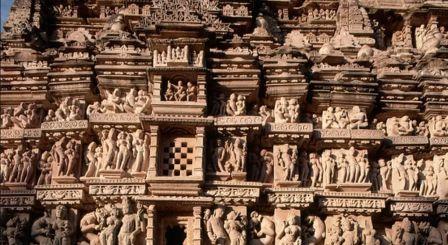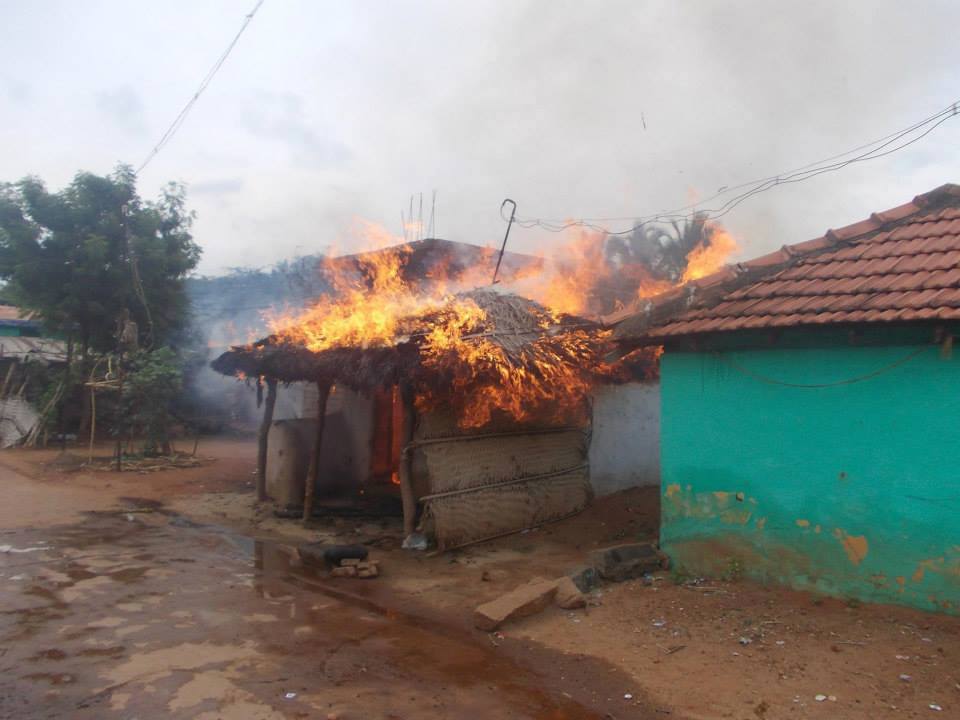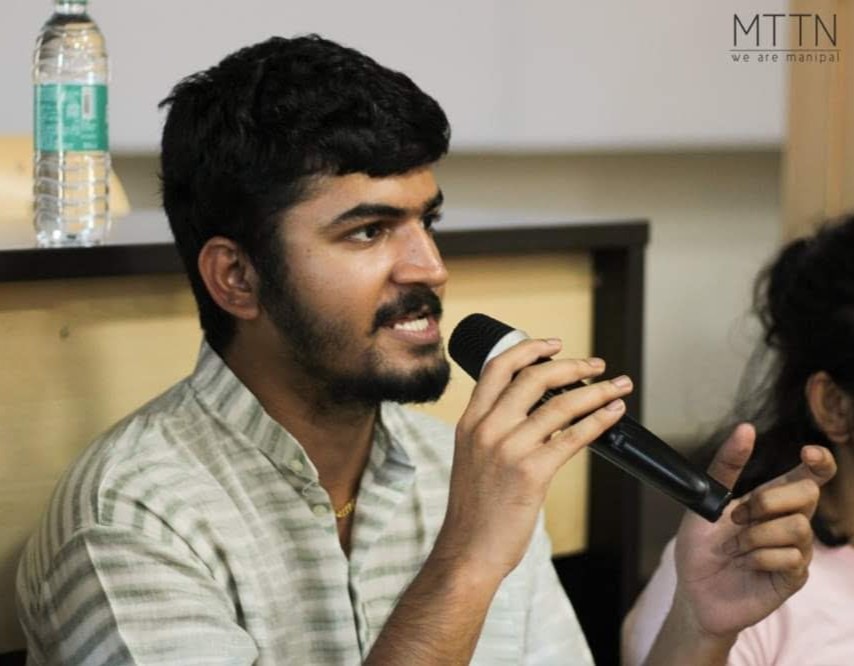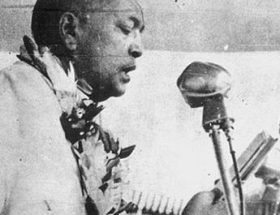Dhruva Bhati
In recent years, there has been an increased discussion on the reclamation or reinterpretation of religious texts or scriptures to validate the idea of queerness. This revivalism is more rigorous in the East, where “this reclamation/reinterpretation” is used to obliterate the idea of “Queerness as a western concept.” However, this quest for the validation of queer identities within the institution of religion reinforces certain structural oppressions perpetrated under the guise of religion, further strengthening the foundation of those oppressive notions within society and the queer community.
Religion has long been used to justify the notion that queerness is not natural and that it never existed. These beliefs have often been used to criminalise queer identities, leaving them susceptible to violence. While the concept of queerness gained traction in the West, the queers of the global east continue to struggle for basic dignity as a result of years of colonisation. This colonisation sowed seeds of the idea that “Queerness is a western concept”, and its very existence is frequently disputed using this approach.
In a paper titled, “A Legacy of Homophobia: Effects of British Colonisation on Queer Rights in India and Uganda”, Kelly Christensen argues:
“One of the ways the British Empire spread itself out, and maintained control of both foreign and domestic populaces was through the use of moral regulation. By making themselves the authority on morals and ethics, the British Empire was able to cast anyone who disagreed with them as immoral, sinners, or otherwise sub-human. British morality is based in Christian ideology and ethics, which also means that anyone who was not Christian, and therefore was not beholden to Christian moral values, was inherently a sinner.”
However, in recent years, feminist philosophers, queer theorists, and activists have used ideas from religious texts to undermine these beliefs. The notion of “reclamation and reinterpretation of religious texts” is being used to assert the presence of queerness throughout history, dismantling the idea of being queer as unnatural and queerness as a Western concept. However, this type of reflection contributes to the systemic oppression inflicted by these texts on certain communities. While this approach may benefit a few, it may be extremely detrimental for the communities whose fundamental rights are denied under the guise of religion.
Activists and academicians justify the existence of queerness in the Indian state using Hinduism and Hindu texts. A lot of these groups use the argument that Hinduism is inherent to India and other religions are foreign. While some Hindu groups reject or deny any mention of homosexuality, many other organisations or activists in India use these texts and existing archeological findings to reaffirm its existence. The existence of stone carvings in the Khajuraho temple, a few allusions in the Kamasutra, and reinterpretation of the Vedas, all support the argument that queerness is natural and not something brought in by the west. An extract in a piece by Human Rights Campaign reads,
“The Gay & Lesbian Vaishnava Association (GALVA) highlights, in its report Homosexuality, Hinduism and the Third Gender, the gender fluidity of Hindu deities, and notes that ‘everything in this world is a reflection of the original subtle and spiritual reality.’ The epic Mahabharata features the transgender character Sikhandin, and depicts the warrior Arjuna cross-dressing to become Brihannala, teacher of fine arts. GALVA further notes, ‘Vedic culture allowed transgender people of the third sex, known as hijras, to live openly according to their gender identity.’ As stated above, contemporary attitudes will vary across different Hindu organisations and society.”
While this may be an effective strategy to introduce queerness into mainstream Hindu society, it disregards the hierarchy of castes and the existence of lower caste queers. The practice of placing queerness in a religion that denies dignity of life to a large segment of the society can only make lower caste queers more vulnerable. Homogenising the experiences of queer community in India using Hindu narratives will further push Dalits, Adivasis, and other religious and ethnic minorities to the peripheries of the queer movement and society. This reclamation or reinterpretation will only assist upper caste queers and further strengthen caste hierarchy in society and the queer community. Nishant Upadhyay in paper titled, “Hindu Nation and its Queers: Caste, Islamophobia, and De/Coloniality in India,” writes,
“What is claimed as Hindu culture is dominant caste culture. Any assertion of Hinduism as queer, trans, and gender nonconforming accepting, is not only an oxymoron, but also a normalisation of caste violence. Gee Imaan Semmalar (2016) argues ‘relying on Hindu myths to affirm our identities gives rise to … a regressive kind of trans identity politics that does not take into account the brutality of the caste system that finds its origin and sanction in the same Hindu religion.’ Thus, dominant caste queer, trans, and gender nonconforming folks who locate their queerness through Hinduism as cultural, historical, and religious praxes are complicit in this caste violence.As structures of brahminical heteropatriarchy predate colonialism in the Indian subcontinent, decolonization is not possible in India without “annihilation of caste” (Ambedkar 1936).”
While those who believe caste is not integral to Hinduism may continue to oppose and push on the existence of stone carvings of the Khajuraho temple, we must recognise that selective reading of scriptures and such formations has always been used to reclaim identities in all religions. Would you accept the Khajuraho temple’s bestiality-displaying carvings as evidence of why it should still exist today as it did in the past? The act of abandoning “orthodox and harmful” religious rituals in the name of progressiveness is restricted and limited to Savarna’s concept of progressiveness, while caste and patriarchal customs are preserved in order to uphold caste and gender dominance.
“One important revelation from scriptures is that the act of sodomy (or scissoring) itself wasn’t seen as unnatural and sinful by itself, but the transgression of the established institution of marriage as an endogamous patriarchal order of advancing the varna; thus, it becomes imperative to note how colonialism transformed the implicit heteronormative approach of the society into an actively homophobic one rooted in eugenics and the western notion of science.”
-Shashwat
This can be better understood in light of the recent same-sex marriage case. While the primary focus was on legalisation under the Special Marriage Act, a sizable proportion also desired legalisation under the Hindu Marriage Act. While the overall push for same-sex marriage legalisation is contested, it is another matter to debate. Our focus here will be on the institution of marriage. Knowing how patriarchal marriage is and how it is used to promote caste and gender hierarchies, desire for recognition under such patriarchal laws will only strengthen these structures.
Along with the current state of Hindu nationalism in India, these reclamations have helped strengthen the Hindu nationalist agenda, projecting the image of a “Queer inclusive Hindu Nation.” The same can be understood with examples of Israel, where the idea of “progressive queer Isreali state” has been used to justify the genocide of Palestinians. In a piece by a queer Kashmiri Pandit, for Stand With Kashmir, the author argues,
“Pinkwashing tactics used by pro-India social media pages push the Islamophobic narrative of Muslims as “barbaric misogynists” and Hindus as “peace loving and tolerant.” They ignore the fact that the Indian government has repeatedly endorsed homophobia and transphobia. Some instances of this homophobia and transphobia include the regressive Transgender Bill that was vehemently opposed by the transgender community, the government’s opposition to surrogacy for same-sex couples, and the proposed opening of centres to “cure” homosexuality. Despite this reality, India seeks to frame itself as the liberator of women and sexual and gender minorities in Kashmir on the one hand, while brutally subjugating those same communities through state violence and occupation on the other hand.”
Various Hindu Nationalist organisations further use this notion of reclamation to push forward their agenda or the idea that homosexuality is innate in India and homophobia was brought to India by Mughals, thereby feeding the homohindunationalist narrative. Aniruddha Dutta, in her paper, “Elsewhere in Queer Hindutva: A Hijra Case Study,” argues,
“This scholarship notes the contradictory and uneasy nature of the alliance or reconciliation between Hindutva and queer politics. The Hindu Right’s nativist exclusion of LGBT people as foreign threats to Indian culture and the BJP-led government’s ambivalence on the decriminalisation of same-sex activity contrast with the right-wing evocation of queer-trans people to bolster Hindu exceptionalism and Islamophobia by projecting Hinduism as exceptionally tolerant, diverse and inclusive compared to other religions, particularly Islam.”
Conclusion
The idea of queer liberation within the mainstream religious structures will always come at the cost of oppression of other communities.
“This kind of argument proves that the queer community is not a monolith, intersectionality exists. Queer people are not oppressed just because of queerness,but intersectional identities too. Just because you are born with a certain gender or sexuality does not mean that you have a full grasp of what it means to be politically queer, which in my understanding is recognizing and standing in solidarity with all marginalised communities. Our marginalisation does not exist in silos; it exists because other people are marginalised too. What good does a few Savarna people being liberated do if Dalit queer people are not liberated, if Muslim queer people are not liberated.”
-Sanika Singh, a third-year student at DU
In short, the question remains: why is there a need for religious approval to grant basic rights to a certain segment of society, and why do we need to place queerness within a profoundly patriarchal and casteist structure? In the context of India, this type of reclamation can only benefit upper-caste Hindu men and contribute to the denial of the existence of Dalit, Muslim, and Adivasi queers. Queer liberation can only be accomplished by annihilating caste and patriarchy; it cannot exist in a vacuum, and it can only be achieved by breaking down oppressive religious institutions.
~~~
Dhruv Bhati is currently pursuing his Masters from Faculty of Sciences, Jamia Millia Islamia along with Masters in Women and Gender Studies from Indira Gandhi National Open University.
Featured Image Credits: BBC










